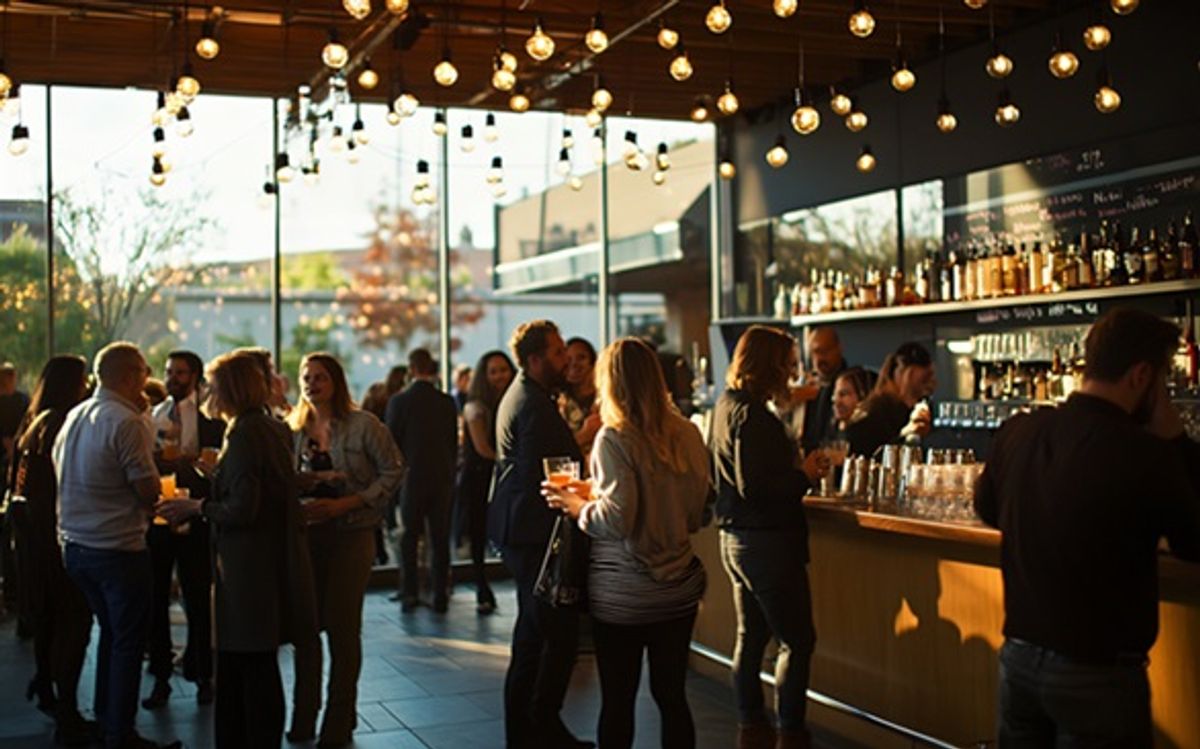Community living rooms: High-ROI strategy

GLOBAL REPORT – As the hospitality industry evolves,
hoteliers and developers increasingly recognize the financial and operational
benefits of adopting a “Community Living Room” approach. This trend is not only
reshaping guest experiences but also driving substantial return on investment
(ROI) for properties that embrace it. By creating spaces that foster social
interaction between guests and the local community, hotels are gaining a
competitive edge in a crowded market and driving more elastic revenue
potential(s) in operations.
Shift toward social connectivity
As hotels pivot toward a more inclusive, experience-driven
model, they open the door to new revenue streams and diversify their business,
which is essential for long-term growth.
With low-cost seating and ambient upgrades (think outlets, Wi-Fi, and light bites), the Proper Hotel in downtown Los Angeles posted a 13% increase in F&B within the first year, improving lobby activation and guest satisfaction scores.
For example, The Proper Hotel in downtown Los Angeles offers
a public lounge and café, which draws remote workers and neighborhood locals
during the day. With low-cost seating and ambient upgrades (think outlets,
Wi-Fi, and light bites), the hotel posted a 13% increase in F&B within the
first year, improving lobby activation and guest satisfaction scores.
Another example is a major brand that enhanced underutilized
lobby space for guests and the community in Chicago. Converting its cut-off
lobby into a fully actualized space and revamping its menu, branding and
aesthetics resulted in the hotel posting a 150% gain in revenue within one
month of the renovation’s completion.
Gains through community focus
Adopting a community-driven hospitality model has the
potential to drive significant ROI. While figures may vary based on property
size, location, and brand positioning, industry experts report that hotels
embracing these trends can see ROI in the range of 6% to 12%. Beyond the
immediate financial uplift, community-oriented operations have proven to
increase brand loyalty, attract a diverse customer base, and extend
revenue-generating periods throughout the day.
One of the most compelling aspects of this approach is the
ability to reduce costly downtimes. Traditional hotel operations often
experience revenue gaps, particularly during non-peak hours, such as midday or
post-dinner.
Community-focused design maximizes these intervals by
offering spaces that cater to guests and local residents. These multifunctional
spaces—such as public lounges, casual meeting pods, pop-up event areas, private
clubs — ensure that hotels are active hubs of social and economic activity
throughout the day.
One striking example is the LINE Hotel in Austin. The hotel
regularly collaborates with local artists, chefs, and brands to host pop-up
events and community gatherings. This collaborative strategy creates
sponsorship revenue that increases foot traffic by 20% and earns social media
visibility without incurring traditional marketing spend.
Renovation costs for hotels like the Proper and the LINE
hotels are not typically publicly available. However, industry data provides
insight into estimated costs for these types of projects.
For instance, the Kingston Hotel in Savannah, Georgia, spent
$3 million in its renovation, which included the addition of a function room
and a revamp of a restaurant, which has been booked solid since its reopening.
Another hotel renovation, the Sol Cypress hotel in San
Antonio, spent an estimated $11 million added new dining options, an event
venue, and a dog park to enhance guest experience reflective of the local
culture.
Power of social spaces
An essential element in the success of community-driven
hospitality is the enhancement of F&B offerings. Hotels that provide unique
F&B experiences—such as craft cocktails, specialty dining, or locally
sourced menus—can significantly enhance their community engagement.
A prime example is the Death & Company cocktail bar at
Denver’s Ramble Hotel, a local hotspot blending brand loyalty with local appeal
while driving significant revenue growth.
The bar, New York-based Death & Co.’s second outpost, is
designed with dark, intimate, and layered with rich textures complementing its
award-winning cocktail offerings.
These spaces go beyond merely offering food and drink; they
foster social engagement, become centers for community activity, and in doing
so, directly enhance the hotel’s bottom line by converting a traditional hotel
lobby into a revenue-generating social gathering place. Creating welcoming
spaces where people can linger, connect, and enjoy a premium product is a
direct driver of operational profitability.
Rise of social clubs
Another high-ROI trend that has emerged from the
community-focused hospitality shift is the rise of private social clubs. Hotels
with private, members-only lounges or clubs are not only enhancing guest
experience but also tapping into a new revenue model.
Membership-based venues, such as Soho House and Dream
Nashville, have proven successful in cultivating a loyal customer base that
generates both membership fees and sustained business activity.
This model capitalizes on the growing demand for
exclusivity, personalized service, and social connectivity. The global private
club market is forecast to reach nearly $26 billion by 2027, signaling a
lucrative opportunity for hotel operators to tap into this growing segment.
Looking ahead
As the hospitality industry moves forward, the ability to
foster a community-driven environment will be a defining factor in a hotel’s
success. Those who invest in spaces designed to promote social connectivity and
inclusivity will be well-positioned to capture new customer bases, increase
repeat visits, and drive long-term profitability.
Hotel developers who embrace this shift will find themselves
at the forefront of a new wave of hospitality—one that blends local engagement,
experiential design, and financial savvy to create exceptional returns on
investment.
As consumer preferences continue to evolve, hoteliers who
prioritize community connections will not only differentiate themselves in a
competitive marketplace but will transform the very essence of what a hotel can
be.
Contributed by Scott Lowe, chief revenue officer, The Beck
Group, Dallas
The views and opinions expressed in this content do not necessarily reflect the opinions of Hotel Investment Today by Northstar or Northstar Travel Group and its affiliated companies.
link




:max_bytes(150000):strip_icc()/CapitalStructureV3-98bd3c154a524492a52170b854cc0b82.jpg)
